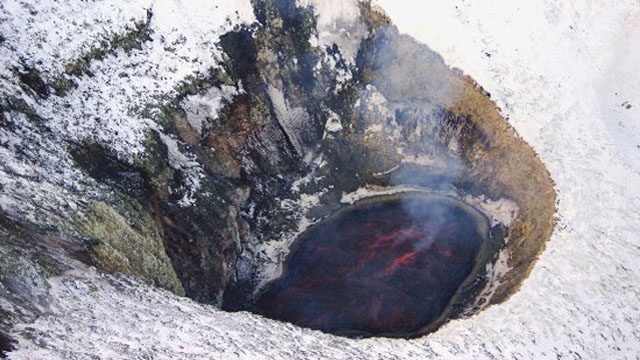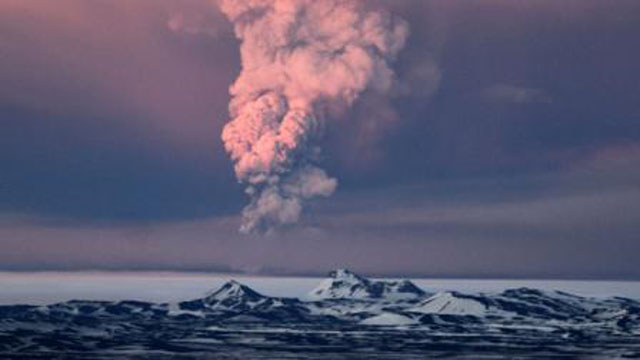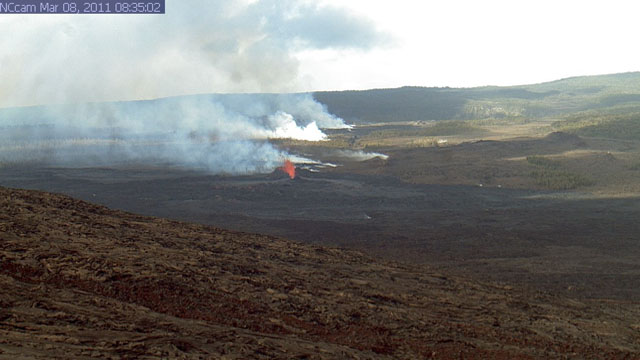Changes in the eruption at Eyjafjallajökull?

nNational Geographic film crew near Eyjafjallajökull, April 18, 2010.
nn
UPDATE 1PM EDT 4/19/2010: I can almost categorically say that Hekla is NOT erupting, contrary to Twitter or the brief banner on MSNBC. See my comment below (#68).
nn
In what is sounding like a bit of a broken record, the eruption at Eyjafjallajökull is still going. However, we might be beginning to see some changes in the style of volcanism – even the first suggestion of lava flows at the new crater. As mentioned yesterday, since the eruption became subglacial, we’ve been seeing eruptions where water – in this case glacial meltwater – has been playing a very important role, creating phreatoplinian or surtseyan style eruptions driven by steam explosions. Although the ash is andesitic, most of the explosiveness of the eruption likely lies with the water. The ash plume at the volcano this morning is smaller than 3,000 meters / 10,000 feet and after watching some of the show that Eyjafjallajökull put on last night, I would venture to say that much of the activity (Icelandic) is strombolian, with explosions (some large) of lava at the vent, throwing incandescent ash and bombs. The explosions are coming from gases escaping from the magma in the conduit and these bombs can travel hundreds of meters – but it is less likely to produce the large ash plumes we have been seeing. All of this implies to me that right now, there is less meltwater entering the crater area. This could change quickly, but this eruption has become a little more like Ruapehu in 1995-96 with abundant small explosions and ash plumes as the andesite erupts.
nn
This change, of course, hasn’t helped Europe too much yet. NATO aircraft were damaged yesterday from an encounter with the ash. However, even with this news, limited flights have been allowed throughout Europe starting today. The economic fallout is just beginning to be felt, as British Airways is now asking the EU for compensation for the ash cancellations. However, some economists are saying the true cost of the ash will be fairly limited, at least in the UK. The ash is now affecting airports in eastern Canada as well. The political fallout of the ash might be impressive as well, with the European Commission claiming the ash restrictions were “excessive” and now recommending only restricting airspace within 50 km of Iceland.
nn
I’ll post more updates as the day progresses, but even watching the webcam, it appears that Eyjafjallajökull is settled down a bit.
nn
{Big hat tip to all Eruptions readers for the countless comments and links on this eruption – I could never keep up with all the news you are finding!}
nn
UPDATE 1: Those of you who enjoy fiction might like this.
nn
UPDATE 2: I’ll likely repost this tomorrow, but a great image of the ash plume from the weekend over on the NASA EO. And here’s another from today.




